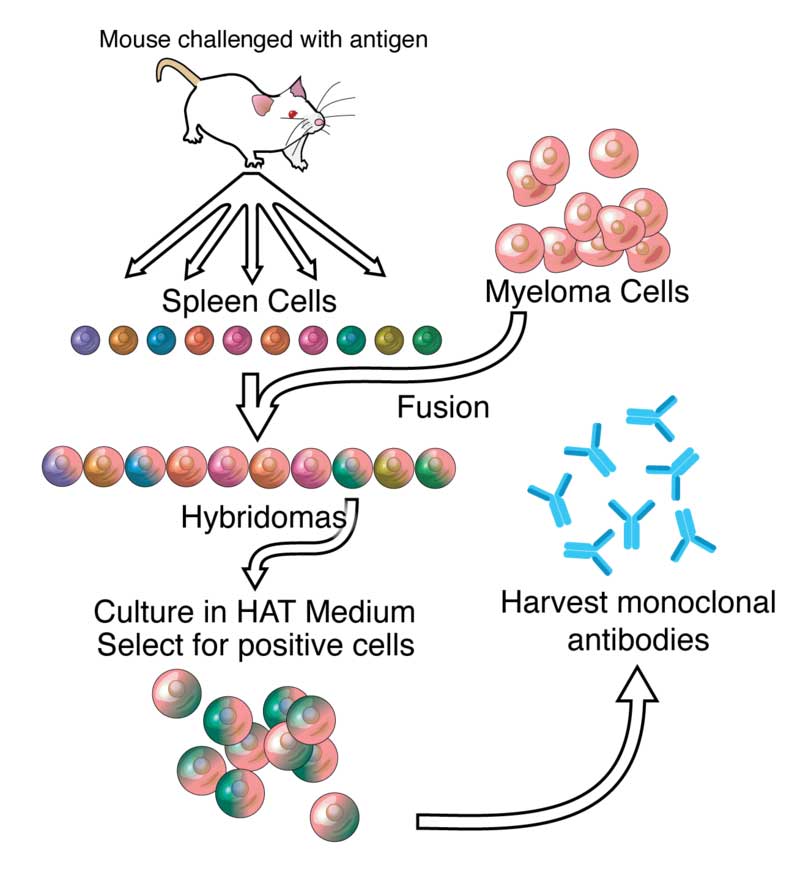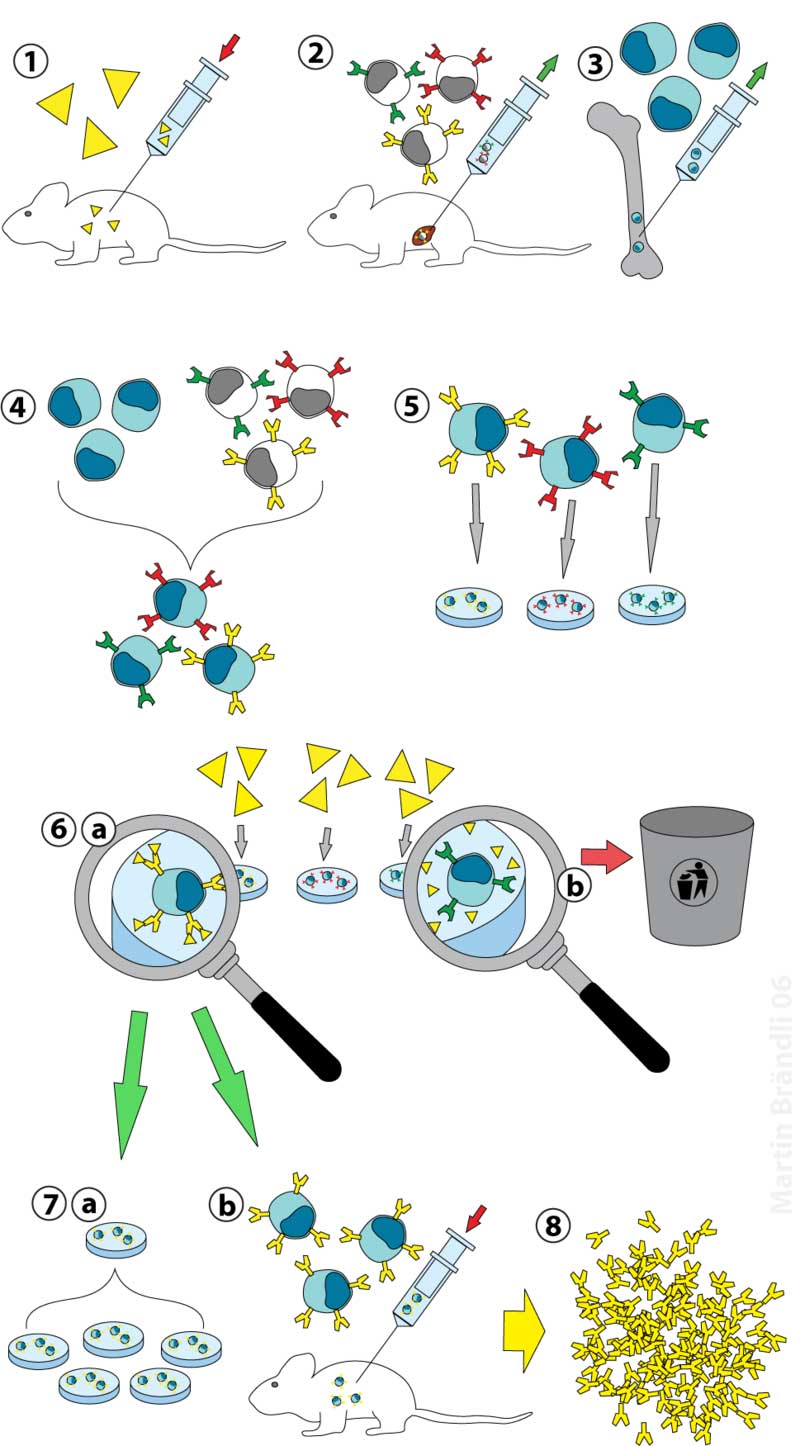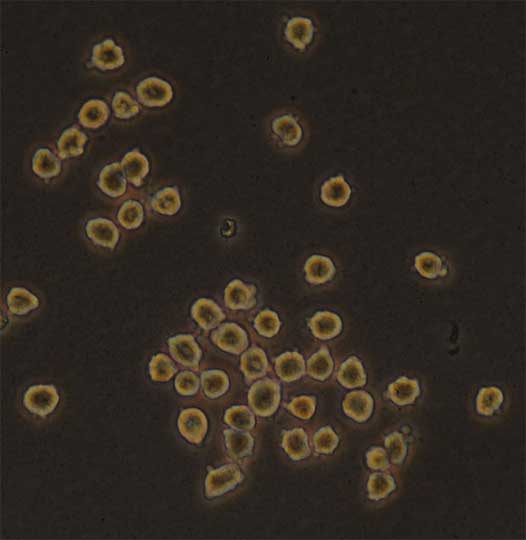What is Hybridoma Technology?
Hybridoma technology is a groundbreaking scientific approach that has revolutionized immunology and medicine. Developed by César Milstein and Georges J.F. Köhler in the 1970s, this technique paved the way to produce monoclonal antibodies (mAbs). mAbs plays a significant role in diagnostics, therapeutics, and research. This blog post on “The Basics of Hybridoma Technology: An Introductory Guide” (Hybridoma Technology Notes) provides a comprehensive overview of hybridoma technology, including its principles, methods, applications, and impact on scientific and medical fields.
Principles of Hybridoma Technology
Ø Hybridoma technology involves the fusion of two distinct cell types: antibody-producing B cells and immortalized myeloma cells.
Ø B cells are derived from the spleen of an immunized animal that carry the genetic information for producing specific antibodies against a target antigen.

Ø Myeloma cells are tumour cells that possess the ability to replicate indefinitely due to their cancerous nature.
Ø Fusion of B cell and myeloma cell generates hybridomas – cells that exhibit the capacity to produce antibodies indefinitely and maintain the specificity of the original B cell.
Ø This cell fusion technology forms the basis for generating monoclonal antibodies, which are uniform and specific to a single antigen epitope.
You may also like: Biotechnology Notes | Immunology Notes |
Methods Involved in Hybridoma Technology
Hybridoma technology involves a series of carefully orchestrated steps. They are summarized below:
(1). Immunization: By injecting an animal (typically a mouse) with the target antigen. Immune system of the animal responds by producing antibodies against the antigen.
(2). Cell Isolation: After an appropriate immune response has been elicited, B cells are harvested from the immunized animal’s spleen.

(3). Cell Fusion: B cells are fused with myeloma cells using techniques such as Poly-Ethylene Glycol (PEG) treatment. This fusion results in hybrid cells, or hybridomas, possessing the ability to replicate indefinitely while maintaining the antibody production capability of B cells.
(4). Selection and Screening: The fused cells are then subjected to a selective medium that allows only hybridomas to survive. Screening methods, such as enzyme-linked immunosorbent assay (ELISA) or fluorescence-activated cell sorting (FACS), identify hybridomas producing the desired antibodies.
(5). Cloning: Single hybridoma cells are isolated to ensure antibody uniformity. This step involves limiting dilution or cell sorting to generate clonal populations.
(6). Antibody Production: Clonal hybridoma cells are cultured to produce a continuous supply of monoclonal antibodies. These antibodies can be harvested from the culture medium and purified for various applications.

(1) Immunisation of a mouse (2) Isolation of B cells from the spleen (3) Cultivation of myeloma cells (4) Fusion of myeloma and B cells (5) Separation of cell lines (6) Screening of suitable cell lines (7) in vitro (a) or in vivo (b) multiplication (8) Harvesting (source: wikipedia)
Applications of Hybridoma Technology
(a). Diagnostics: Monoclonal antibodies are utilized in diagnostic assays, such as ELISA and Western blotting, to detect specific antigens with high sensitivity and precision. These assays play a crucial role in detecting diseases, identifying pathogens, and monitoring biomarkers.
(b). Therapeutics: Monoclonal are employed in targeted therapies for conditions like cancer, autoimmune diseases, and infectious diseases. Examples include trastuzumab for HER2-positive breast cancer and rituximab for B-cell lymphomas.
(c). Research: Monoclonal antibodies enable scientists to study specific proteins, cells, and molecular pathways with exceptional specificity. They facilitate research in areas such as immunology, cell biology, and genetics.
(d). Immunotherapy: Hybridoma technology has contributed to the development of immunotherapies, including immune checkpoint inhibitors and chimeric antigen receptor (CAR) T-cell therapies, which harness the power of the immune system to combat diseases like cancer.
(e). Vaccines: Monoclonal antibodies play a role in vaccine development, aiding in the identification and characterization of vaccine antigens.

Impact and Future Prospects
Ø Advent of hybridoma technology has revolutionized the fields of immunology, diagnostics, and medicine.
Ø Ability to generate antibodies with precise specificity has led to improved disease detection, targeted therapies, and enhanced scientific understanding.
Ø This technology has paved the way for personalized medicine approaches and has significantly reduced the use of polyclonal antibodies
Ø New advancements in hybridoma technology, such as the development of recombinant antibodies and improved antibody engineering techniques, have further expanded the applications of hybridoma technology
Conclusion
Hybridoma technology stands as a testament to human ingenuity and innovation. Its principles and methods have provided a solid foundation for generating monoclonal antibodies that have transformed diagnostics, therapeutics, and research. From its inception in the 1970s, hybridoma technology has evolved to meet the demands of a rapidly advancing scientific landscape. As technology continues to progress, hybridoma-based approaches will undoubtedly remain at the forefront of cutting-edge research and medical breakthroughs, shaping the future of healthcare and scientific discovery.
<<< Back to Biotechnology Notes Page
| You may also like NOTES in... | ||
|---|---|---|
| BOTANY | BIOCHEMISTRY | MOL. BIOLOGY |
| ZOOLOGY | MICROBIOLOGY | BIOSTATISTICS |
| ECOLOGY | IMMUNOLOGY | BIOTECHNOLOGY |
| GENETICS | EMBRYOLOGY | PHYSIOLOGY |
| EVOLUTION | BIOPHYSICS | BIOINFORMATICS |
| You may also like... | ||
|---|---|---|
| NOTES | QUESTION BANK | COMPETITIVE EXAMS. |
| PPTs | UNIVERSITY EXAMS | DIFFERENCE BETWEEN.. |
| MCQs | PLUS ONE BIOLOGY | NEWS & JOBS |
| MOCK TESTS | PLUS TWO BIOLOGY | PRACTICAL |
